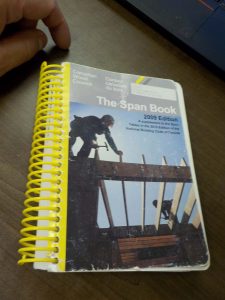We know – judging from the number of new permit applications received over the last few weeks – that there are a lot folks in the process of trying to build a garage or shed before the winter hits.
While some of these projects are contractor-built, a few are self-built.
For those that are tackling a wood-frame construction job for the first time, what seems daunting may be simple. And yet, what seems simple might be daunting.
Today’s post focuses on some wall-building tips that may help a first-time or inexperienced builder working on a small DIY project.
The key approach when framing walls, is to – if at all possible - build the walls on the floor of the building first, then lift them into place when done.
1) Select lumber. Use the straightest pieces for the bottom and top plates.
2) Mark off the points where the studs will lay in place. Most tape measures have red marks on the 16” increments, making 16-inch-on-centre framing easy. Remember, the width of a common stud is 1 1/2”.
3) Select the studs. If your structure is going to have interior sheathing, then it’s best to look down the line of the stud and place them so the crown (bend) faces up.
4) Once the framing is nailed into place, square the wall. This can be done by taking two tape measures on diagonals, and tweaking the frame until both tape measures read within a small margin of error – the top-line contractors will want less than 1/16” in difference across the two. This ensures the wall as it lays on the floor is square. If you really want to be touchy, brace the wall using tack nails before proceeding to the next step.
5) Install the exterior sheathing OR, at the very least, tack-nail a section of lumber across the diagonal. If you’re installing sheathing best practice is to leave a “lip” of OSB/plywood at the bottom equal to the height of the sill plate or supporting wood members.
6) If sheathing is installed, lay out the housewrap over the sheathing before raising the wall.
7) remove the tack nails, and lift the wall into place.
Installing the sheathing before the lift minimizes the labour required to install the sheathing after the wall is in place.


